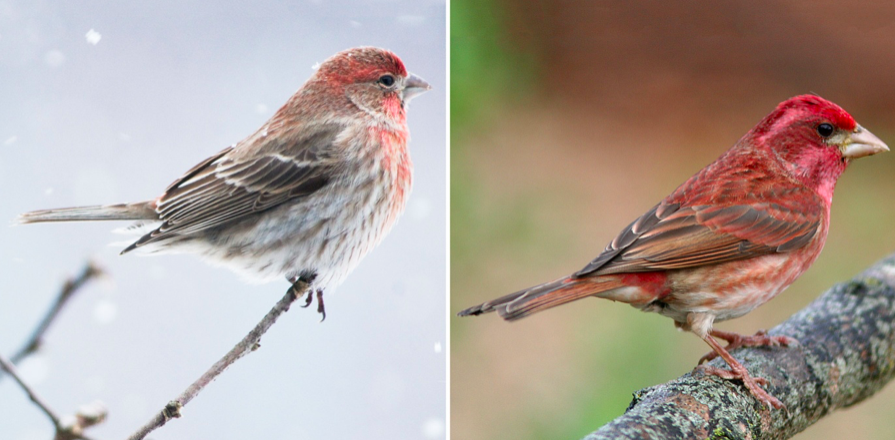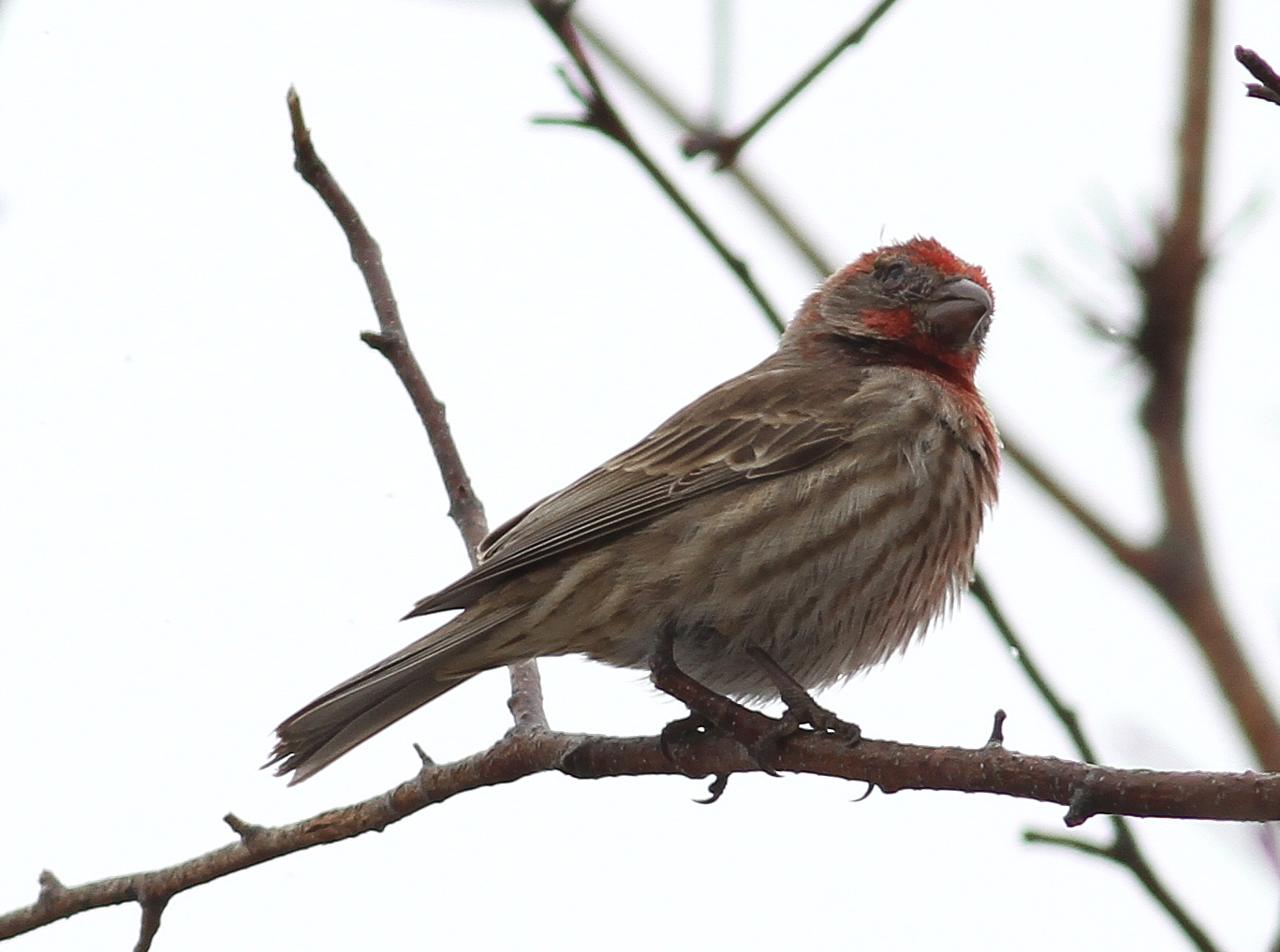Recently we observed a house finch at our bird feeder with puffy red eyes. Something was clearly wrong. This distressed individual prompted us to learn more about these urban birds and their reputation for contracting eye diseases.
Before the house finch range expanded to southern Wisconsin in the 1980’s and 90’s, it was easy to identify purple finches. While they do appear similar, a side by side comparison helps immensely with differentiating the two species. Purple finch males have a striking purple head, a larger bill, and wing feathers that are edged in red.
House (left) and purple finch (right). Photo by National Audubon Society
House finches are native west of the Rocky Mountains. In the 1940’s and 50’s, many Americans achieved a standard of living that allowed them to buy pets. Wild house finches, marketed as Hollywood finches, were trapped illegally in southern California and shipped to Long Island, New York. A birder recognized house finches in a Long Island pet store, and reported the situation to the Audubon Society. This news was passed to federal officials, and unscrupulous pet store owners shooed their loot of house finches into the streets to avoid prosecution.
Stan Temple, in 2006, wrote the house finch section in the Atlas of Breeding Birds of Wisconsin, “This remarkable range expansion has to be regarded as one of the more significant ornithological phenomena of recent decades.” In Wisconsin there were a few sightings in the 1970s. By 1986 they were added to the Wisconsin bird list. We found our first house finches in 1990 on the Poynette Christmas Bird Count. Researchers estimate that there are around 34 million house finches in the U.S. Temple mentions one reason for their explosive population increase is that birds can nest from late March to early September, and that most pairs raise two to three broods with four to five young.
Range expansion of the house finch. Image by Cornell Lab of Ornithology
In Breeding Bird Atlas I from 1995-2000, house finches were found in 61% of the priority blocks, and at the end of year four in Atlas II they have been found in only 29% of priority blocks. It appears that their range has increased in some areas, however it recedes in others, and they are still uncommon in forested areas of northern Wisconsin.
Populations of house finches suffered a steep decline beginning in January 1994 as a result of a contagious disease called mycoplasmal conjunctivitis. The disease causes respiratory problems and red swollen eyes, making them susceptible to predators and adverse weather. Luckily it’s not harmful to humans. The disease is easily spread by birds feeding at tube feeders that offer Nyjer and hulled sunflower seeds.
This house finch suffers from conjunctivitis. Photo by Fyn Kynd
House Finch conjunctivitis was first observed at feeders in the Washington, D.C. area. Temple stated that conjunctivitis spread through the population as rapidly as the population spread through the eastern U.S.
So what is a bird feeding enthusiast to do? We want to feed birds for a variety of reasons, but we do not want to spread disease to birds who share our feeders. A call to Pat Ready, MAS member and volunteer provided the answer to the problem. Wild Birds Unlimited offers their “Eco-Clean” line of tube feeders which feature a product called Agion. We have now purchased these feeders to replace all of our old tube feeders. The feeders are coated with Agion which starves bacteria of oxygen and inhibits bacterial reproduction. The feeders are costly, but we want to maintain a healthy bird feeding community, not one that spreads disease to our flock. Wild Birds Unlimited is the only place where EcoClean feeders are sold.
House finches and American goldfinches are feeding on an Eco-clean feeder stocked with sunflower medium chips at Goose Pond Sanctuary. Photo by Mark Martin
We enjoy watching the house finches at our feeders, listening to their songs, and observing them nest around our residences in hanging flower baskets.
Written by Mark Martin and Susan Foote-Martin, Goose Pond Sanctuary resident co-managers, and Graham Steinhauer, Goose Pond Sanctuary land steward










